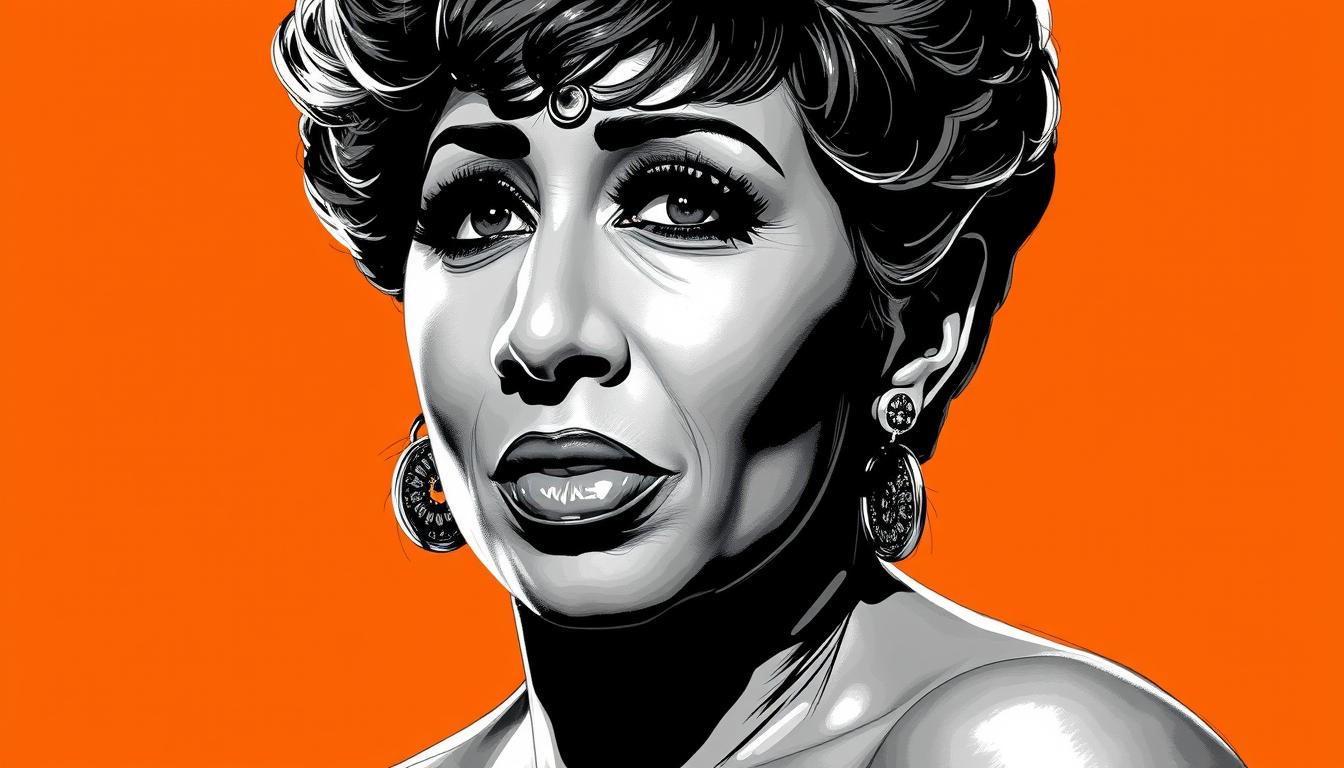From the docks of Cardiff’s Tiger Bay to the world’s grandest stages, one voice defined an era of glamour. Dame Shirley Bassey emerged from working-class roots to become a global music icon. Her journey began in 1937, in a Wales far different from today.
This Welsh singer built a career spanning seven decades, a feat unmatched in UK chart history. At 88 years young, her legacy continues to influence performers worldwide. She sold over 140 million records, ranking among the best-selling female artists of all time.
The artist recorded three James Bond theme songs, more than any other vocalist. Her powerful, precise voice became synonymous with cinematic drama and sophistication. She transformed from factory work to sold-out concerts at Carnegie Hall.
Dame Shirley’s story represents more than musical success. She became one of the first Black British entertainers to achieve international fame. Her career demonstrates lasting power in an industry of constant change.
Early Beginnings and Foundations
Before global fame, there was a childhood shaped by the harsh realities and rich culture of Tiger Bay. The young singer’s early life in this Cardiff docklands community forged the resilience that would define her career.
Childhood in Tiger Bay
Born into a mixed-race household on Bute Street, the artist experienced diversity from her earliest years. Her Nigerian father and English mother created a multicultural foundation, though the family faced separation when she was just two years old.
Growing up in the nearby Splott community, poverty was a constant presence. The area demanded strength from its residents, and the future star learned survival skills early. Tiger Bay’s tough environment became her first training ground.
Early Musical Influences and Family Background
Music emerged as a constant in a complicated family life marked by previous marriages and loss. Even at Moorland Road School, teachers noticed her powerful voice, though they often discouraged its expression.
By age 14, she left school for factory work at Curran Steels. Evenings and weekends belonged to local pubs and clubs where she could perform. Her voice, once told to “shut up” in school, found its first real audience in these humble venues.
The raw emotion in her early performances unsettled some adults but hinted at the talent to come. This formative year laid the groundwork for everything that followed in her remarkable life.
Breakthrough in the 1950s
The year 1953 marked a decisive turn, swapping factory walls for the footlights. A professional contract launched her onto the variety circuit. This world was a tough school for a young performer.
She learned stagecraft playing to crowds in shows like Memories of Jolson. Every performance was a lesson in survival and connection.
First Record Contract and Debut Performances
Impresario Jack Hylton spotted her talent at London’s Astor Club in 1955. His invitation to the West End was the big break. She joined the cast of Such Is Life at the Adelphi Theatre.
Philips producer Johnny Franz saw her on television and offered a deal. Her first single, “Burn My Candle,” was released in 1956. The BBC banned it for suggestive lyrics, but the controversy built valuable attention.
Initial Hits and Early Recognition
The artist’s first real chart success came in 1957. “The Banana Boat Song” climbed to No. 8 in the UK. This hit proved she could sell records and capture the public’s ear.
By the decade’s end, Shirley Bassey had firmly arrived. The journey from local clubs to national recognition was complete. A formidable career was now underway.
Rise to Fame and Chart-Topping Success
A London Palladium appearance on November 30, 1958, changed everything. It ignited sales for “As I Love You,” a ballad that had initially struggled as a B-side. By January 1959, the song reached number-one.
It held the top spot for four weeks. This made the singer the first Welsh artist to achieve a British hit number-one. Her place in music history was secured.
Historic Number-One Singles
While “As I Love You” climbed, so did “Kiss Me, Honey Honey, Kiss Me.” Both records occupied the top three simultaneously. This rare feat showcased her commercial power.
The double A-side “Reach for the Stars”/”Climb Ev’ry Mountain” gave her a second number-one in 1961. It solidified her status as a premier solo artist. American labels took notice of this chart force.
| Song Title | Year | Peak Chart Position |
|---|---|---|
| “You’ll Never Know” | 1960 | No. 6 |
| “I’ll Get By” | 1961 | No. 10 |
| “Reach for the Stars” | 1961 | No. 1 |
Between 1960 and 1961, she landed four Top 10 hits. This proved her appeal was no fluke. In August 1961, she signed with United Artists Records, beginning her transatlantic career.
The James Bond Connection
No other vocalist is more intrinsically linked to the James Bond film franchise. Her powerful voice became the sound of cinematic espionage and glamour. This partnership defined a significant chapter in her career.
The collaboration began in 1964 with the iconic theme for Goldfinger. The song became an instant classic. It peaked at No. 8 on the Billboard Hot 100, marking her only Top 40 hit in the United States.
The Goldfinger soundtrack also reached number-one. This success amplified her international profile dramatically. The track’s legacy was cemented with its induction into the Grammy Hall of Fame in 2008.
Goldfinger and the Bond Legacy
She recorded a song for the next film, Thunderball, titled “Mr Kiss Kiss Bang Bang.” Producers ultimately chose a Tom Jones track for the final film. However, her melody influenced the movie’s score.
She returned to record the theme for Diamonds Are Forever in 1971. Her third and final Bond theme was for 1979’s Moonraker. This achievement makes her the only artist to officially perform multiple James Bond theme songs.
| Film | Year | Chart Peak (US) |
|---|---|---|
| Goldfinger | 1964 | No. 8 |
| Diamonds Are Forever | 1971 | N/A |
| Moonraker | 1979 | N/A |
Impact on International Recognition
The James Bond connection transformed her from a British star into a global icon. These theme songs are among her most recognized works. They linked her voice permanently with sophistication and drama.
This partnership ensured her music reached audiences worldwide. It remains a cornerstone of her enduring legacy in popular culture.
Shirley Bassey in the Spotlight: Television and Live Performances
The 1970s marked a new era for the artist as she conquered both television variety shows and prestigious concert venues. Her powerful stage presence translated perfectly to the small screen while her live shows became legendary events.
Memorable BBC Specials and Variety Shows
Dame Shirley became a television fixture with her own BBC variety series. The 1976 show featured guests like Neil Diamond and Dusty Springfield. It blended music with spectacle in six glamorous episodes.
Her 1970 special, recorded in Sweden, marked a triumphant UK comeback. The artist also appeared on the iconic Morecambe and Wise Christmas Show in 1971. Millions watched this cultural moment unfold.
Legendary Live Concerts and Global Tours
Her concert career reached new heights during this period. Dame Shirley performed at Royal Albert Hall 45 times since her 1971 debut. This remarkable record showcases her enduring appeal.
The singer’s 1964 Carnegie Hall debut established her American presence. By 1973, her sold-out concerts there became a celebrated live album. Each performance balanced elegance with raw vocal force.
Artistic Evolution in the 1970s
The 1970s demanded reinvention, and Shirley Bassey answered with a bold new sound. Her work with producer Johnny Harris marked a significant turning point. They blended traditional pop with contemporary rock influences.
Transition to New Musical Styles
The 1970 album “Something” showcased this fresh direction. Its title track became a major hit, reaching No. 4 in the UK. The song stayed on charts for 22 weeks, her longest chart run.
Bassey recorded this material while maintaining her signature style. She continued performing standards and torch songs that built her career. This balance proved her adaptability to changing music trends.
“Never Never Never” became another international success. The English version of an Italian hit reached top 10 in multiple countries. It topped charts in Australia and South Africa.
Between 1971 and 1978, the artist released eight albums for United Artists. Each explored new musical territory while honoring her roots. This prolific output kept her relevant throughout the decade.
The singer’s evolution showed artistic courage. She listened to changing tastes and reshaped her sound accordingly. Her 1970s work demonstrated lasting relevance in a transforming industry.
Musical Diversity and Genre-Crossing Recordings
Throughout her career, the artist consistently defied genre boundaries with bold musical experiments. Her powerful voice became a versatile instrument, moving seamlessly between R&B, pop, jazz, and soul.
This adventurous spirit defined her later recordings. She never confined herself to a single sound.
Explorations in Pop, Jazz, and Soul
Dame Shirley’s versatility extended beyond language. In 1989, she released La Mujer, an entire album sung in Spanish.
Four years earlier, her I Am What I Am album featured the London Symphony Orchestra. This recording merged pop standards with grand orchestral arrangements.
She even ventured into electronic music. Her 1987 collaboration with Swiss duo Yello on “The Rhythm Divine” surprised audiences.
Collaborations and Unique Interpretations
The singer embraced unexpected partnerships. She worked with French actor Alain Delon on a duet and appeared in Chris Rea’s film La Passione.
Her 1997 single “History Repeating,” made with the Propellerheads, became a dance chart number-one. It introduced her voice to a new generation.
This period also saw a rare dispute. Dame Shirley recorded a James Bond themes album but blocked its release, asserting strong artistic control.
| Song / Project | Year | Collaborator / Context |
|---|---|---|
| “The Rhythm Divine” | 1987 | Yello (Electronic duo) |
| I Am What I Am | 1984 | London Symphony Orchestra |
| “History Repeating” | 1997 | The Propellerheads (Dance chart hit) |
| La Mujer | 1989 | Full album recorded in Spanish |
These diverse projects kept her music fresh and unpredictable. Each new recording demonstrated a fearless artistic spirit.
Honors and Awards Celebrating a Legendary Career
Beyond chart success and sold-out concerts, formal recognition arrived through Britain’s highest honors. These accolades mapped a journey from local clubs to national institutions.
The artist’s impact extended far beyond entertainment. Her work earned recognition from both the music industry and the Crown.
Accolades: BRIT Award, CBE, and DBE
Dame Shirley received the first BRIT Award for Best British Female Solo Artist in 1977. This set a standard for future honorees in the music industry.
Her contributions were formally recognized with royal honors. She became a Commander of the Order of the British Empire in 1993.
The title of Dame Commander followed in 1999. This placed her among Britain’s most respected artists.
| Year | Award | Significance |
|---|---|---|
| 1977 | BRIT Award | First Best British Female Solo Artist |
| 1993 | CBE | Commander of the Order of the British Empire |
| 1999 | DBE | Dame Commander of the Order of the British Empire |
| 2003 | 100 Great Black Britons | Trailblazer recognition |
| 2008 | Grammy Hall of Fame | Goldfinger induction |
These honors represented more than professional success. They validated a career that broke barriers and set new standards.
Cultural Impact and Legacy as a Female Solo Artist
Long after the final bow, a legacy is built on records broken and barriers dismantled. The career of this iconic singer resonates not just in sales figures but in lasting influence.
Her voice became a standard for power and control. Generations of artists studied her technique.
Influence on Future Generations of Artists
Aretha Franklin herself admired the vocal force of Shirley Bassey. This respect highlights the singer’s profound impact across genres and borders.
She demonstrated that a female solo artist could command a stage for over seventy years. This longevity is a lesson in reinvention and resilience.
Her achievements are historic. This artist is the first woman to chart a Top 40 album in seven consecutive decades in the UK.
That record remains unmatched. It proves her enduring connection with the public.
With over 140 million records sold worldwide, she stands among the best-selling artists. Dame Shirley paved the way for Black British entertainers in a challenging industry.
Her legacy is not just in the music she made. It is in the doors she opened and the high standard she set for every solo artist who followed.
Iconography, Fashion, and Signature Glamour
Glamour wasn’t just an accessory for this performer; it was the armor she wore into every battle on stage. Her visual presence became inseparable from the vocal power that defined her career.
Each television appearance and live show presented a complete package of sound and spectacle. The sequined gowns and lavish jewelry communicated authority before she sang a single note.
Sequined Gowns, Stage Costumes, and Media Image
The iconic stage costumes of Shirley Bassey achieved legendary status in their own right. In 2003, Christie’s auction house hosted “Dame Shirley Bassey: 50 Years of Glittering Gowns.”
This gala event raised £250,000 for charity. The funds supported music education and children’s healthcare.
One particularly memorable media moment occurred at Prince Charles’ 1979 birthday party. Her see-through gown created a sensation that blended scandal with high fashion.
| Year | Event | Style Significance |
|---|---|---|
| 1979 | Prince Charles’ Birthday | See-through gown created media frenzy |
| 2003 | Christie’s Auction | 50 years of costumes celebrated for charity |
| 2006 | Marks & Spencer Ad | James Bond-style campaign revival |
Enduring Style and Pop Culture References
Dame Shirley’s influence extended far beyond the concert stage. Her 2006 Marks & Spencer Christmas campaign reinforced her Bond connection.
The television advertisement featured her in an ice palace singing “Get the Party Started.” This modern interpretation proved her style remained relevant across generations.
Her glamorous aesthetic became shorthand for diva elegance in drag performances and fashion editorials. The signature look demonstrated that true style transcends temporary trends.
This performer understood that fashion was part of the performance itself. Her enduring image continues to inspire artists who recognize glamour as professional power.
Final Reflections on a Timeless Journey
The story of Dame Shirley Veronica Bassey spans from teenage performances in 1953 to contemporary relevance in 2025. Her career navigated major labels from Philips to Geffen while maintaining artistic integrity across generations.
With 27 UK top 40 hits and successful recordings like “Get the Party Started,” the singer demonstrated remarkable chart longevity. Sold-out Carnegie Hall concerts and United States television appearances cemented her international appeal.
This musical journey reflects incredible persistence through seven decades of changing tastes. Dame Shirley’s legacy endures as a testament to artistic evolution and timeless vocal power.




